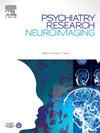Hyperconnecitivity between dorsal attention and frontoparietal networks predicts treatment response in obsessive-compulsive disorder
Abstract
Obsessive-compulsive disorder (OCD) presented with repetitive obsessions and/or compulsions were associated with disrupted resting-state functional connectivity (rs-FC). To investigate the pharmacological treatment effect on rs-FC changes in OCD patients we conducted the seed-to-voxel FC analyses using dorsal attention network (DAN), default mode network (DMN), salience network (SN) and frontoparietal network (FPN) and basal ganglia seeds. Twenty-two healthy subjects and twenty-four unmedicated OCD patients underwent resting-state functional magnetic resonance imaging. Patients were rescanned after 12 weeks of escitalopram treatment. We found increased FC both within the DAN and between the DAN and the FPN which was ameliorated after medication and correlated significantly with the clinical improvement in obsession scores. We also observed an anticorrelation between the left caudate and the supplementary motor area in unmedicated OCD patients which also normalized with treatment. Results further showed treatment related normalization of orbitofrontal cortex hyperconnectivity with DMN and hypoconnectivity with DAN whereas aberrant FC between the SN and visual areas appears to be a medication effect. We suggest that DAN to FPN hyperconnectivity which is positively correlated with clinical improvement in obsession scores at pre-treatment stage in present study has a potential for being a neuroimaging marker to predict the treatment response in OCD.

 求助内容:
求助内容: 应助结果提醒方式:
应助结果提醒方式:


